A true profession,
pure know-how!
Are you interested in finding out how Foie Gras is made and how the industry has been perpetuating its artisan know-how for so many years? Then follow our guide and become an expert on Foie Gras!
Foie Gras up-close and personal
People often wonder exactly what Foie Gras is… We have the answers!
It is a noble and healthful product from a goose or duck that must be in good health and reared under good conditions. More than 3,000 producers proudly breed their animals in the open air until they reach adulthood, on modern family-owned farms.
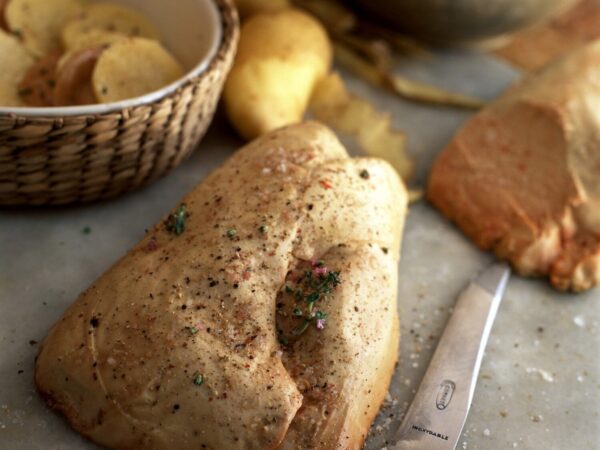
Ducks and geese have to go through a fattening phase to offer a beautiful Foie Gras. Contrary to popular belief, fattening reproduces the natural tendency in certain animals (palmipeds in particular) to overfeed in order to endure the winter and migration.
Not quite clear yet? Let’s take things apart together.
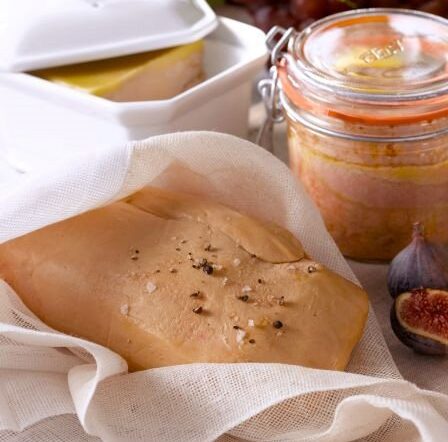

An artisanal breeding method that respects the animals
Age-old know-how
Foie Gras is a matter of tradition, handed down from generation to generation. Guardians of ancestral know-how (4,000 years and counting), breeders are keen to pass it on with passion and go about their work with pride.
Being a product of gastronomy, Foie Gras is not the result of intensive methods, but of small-scale, family-run farms that have been modernised year after year. In France, all the ducks and geese are raised in the open air, though they sometimes have to be sheltered to protect them from the vagaries of the weather and health hazards.
The breeding of a duck or a goose for the production of Foie Gras necessarily includes two key stages:
- A breeding phase which accounts for approximately 90% of the animal’s life, with unbridled access to a grassy and wooded area.
- A fattening phase, which is much shorter, lasting about 2 weeks, indoors in collective units, where the palmipeds are fed 2 meals per day, made up primarily of cooked maize (gradually increasing by 20g/day).
These two successive stages, which are subject to very tight standards, are essential to producing a good Foie Gras with an impeccable texture and taste.
Breeding phase
11 to 14 weeks
Fattening phase
10 to 14 days
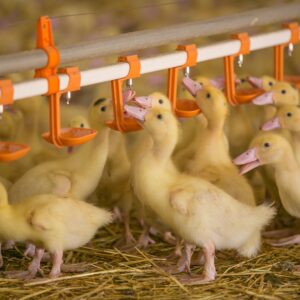
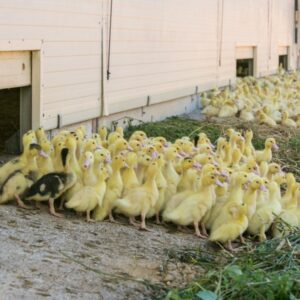
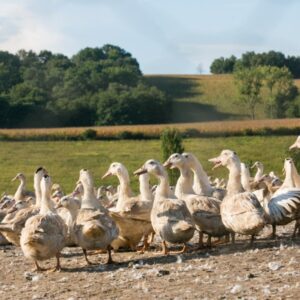
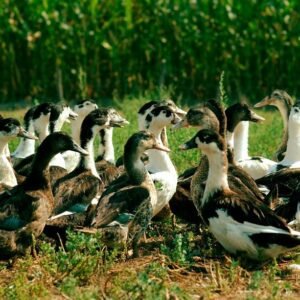
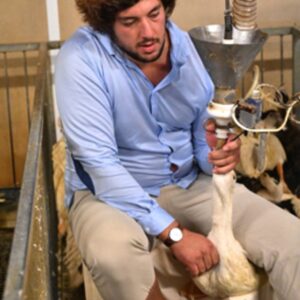
90% of outdoor life
Extensive breeding
10% of indoor life
Fattening by trained professionals
All about fattening – no holds barred!
During the fattening phase, Foie Gras producers draw on a natural characteristic specific to these animals. Over the years, hardy strains have been adapted : the Mulard duck, the Muscovy duck and the South-Western goose to produce Foie Gras.
Scientists are unanimous : the 100% regulated method is pain-free to the animals and results in a healthful product. Here’s why:
- The crop is an out-pocketing found at the base of the neck, like the one pelicans can have for instance, and it distends when the animals ingest food. When ducks feed in the wild, the beak, oesophagus and crop line up and expand to gobble up fish, birds, field mice and frogs… The same principle applies to the ration of cooked maize!
- They have an incredible capacity to store fat (their energy reserves) in their liver! This comes only naturally to them, thanks to their distinctive metabolism. A duck could thus yield a 1-kg Foie Gras… but manufacturers and breeders aim for the optimal and qualitative weight of 500g maximum.

Did you know?
If a fattened goose or duck is taken out of the fattening circuit, its 500g Foie Gras will return to its original weight in just a few days (it loses an average of 10g/hour), as happens in the wild when the bird has exhausted its resources after a long migratory journey.
As to Foie Gras without assisted-feeding?
For the time being, it is impossible to produce and market Foie Gras in a sustainable way without going through the fattening phase. Tested on an experimental basis, some geese have produced Foie Gras without being fattened by humans, but the result was not a 100% quality product.
Key take-aways
To conclude, as you have gathered, the biology of the palmiped is very different from that of the human being. Breeders, trained to work with these characteristics, are intent on giving the geese and ducks the care they need to be able to market a Foie Gras with incomparable qualities.
In order to ensure and maintain the well-being and good health of their animals, the breeders refer to and are subject to strict commitments and specifications, which list the best practices and methods for ascertaining the animals’ health.

100% gastronomic heritage!
In France, Foie Gras is an emblematic gastronomic product. It has even been recognised as part of French Culinary and Gastronomic Heritage since 2006! France is the world’s leading producer, consumer and exporter of this dish. That’s right: 80% of the world’s Foie Gras hails from France.
French Foie Gras can be found in direct sales (in shops or on online sites), in supermarkets, in most restaurants and finally abroad where it is highly appreciated in Belgium, Spain, Japan, China, Hong Kong, or for instance in Singapore or the Middle East.
-
France is the leading nation
worldwide in Foie Gras production
-
100,000 direct and indirect jobs
are generated by the Foie Gras industry in France
-
+ 30,000 families
earn their living from this activity
-
80% of Foie Gras
worldwide is produced in France
-
92% of the French
are attached to the French origin of Foie Gras
